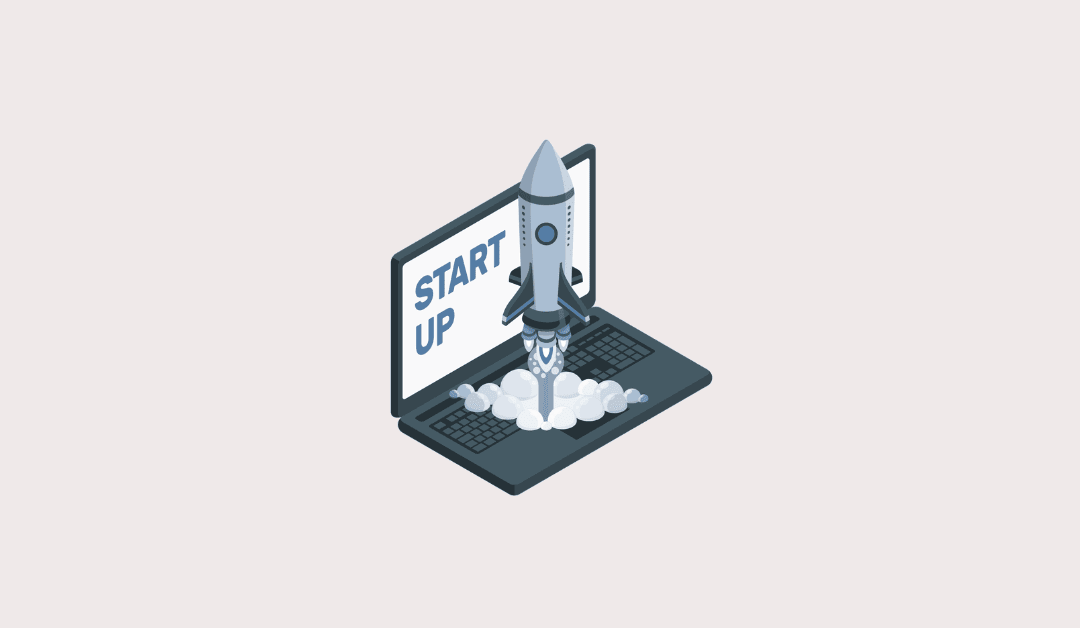Marketing is versatile and robust. The nuances differ between industries, but at its most straightforward fundamental marketing is how organizations engage prospective customers and explain a product’s or service’s specific benefits. It covers all corporations’ actions to promote, sell, and spread that product or service. In this article I will highlights some marketing tips and ideas for small businesses
The purpose is to generate sales and maintain a loyal customer base by educating new and present consumers about the goods. Your core audience must first be aware that your product or service exists before you can hope to induce a purchase. An essential activity in any organization, marketing aids attempt to acquire, keep and expand customers.
But marketing does not end there — ongoing contact helps develop loyalty and foster a long-term relationship. Effective programs and campaigns attract and engage audiences, separate the firm from the competition, and support more significant commercial objectives, like raising sales or expanding to a new market. Marketing is as old as selling. The word “marketing” originates from Europe in the early 1500s, when traveling merchants sold food and other commodities at local markets. Marketing tactics have progressed as society and technology have expanded.
An integral component of any company’s strategy is the marketing plan. The marketing process encompasses identifying, analyzing, and answering the customer’s wants, as well as developing the brand’s public awareness. A marketing strategy describes the firm’s techniques to attain these goals. A basic marketing plan usually incorporates specific targets for performing these actions and reaching specified milestones.
Lets look at the Marketing Tips and Ideas for Small Businesses
Table of Contents
Adopt Trust Based Marketing
Trust-based marketing is believed to provide unbiased information for customers trying to make an acceptable conclusion on a complex purchase decision.
The premise is that in competitive markets, marketers need to engage their customers with respect and understand that product and competition information is readily accessible. Brands that give clients numerous product options, including their competitor firm, will win the consumer’s trust even if it does not result in a quick sale. When objective and truthful information is presented, a consumer’s loyalty toward the company grows, and the company will acquire greater lifetime profitability per customer.
You don’t do this by merely telling your prospect you are trustworthy, making them feel valued, educate them beyond their comprehension of the product or service market.
Know the Secret Addiction of Your Audience
A crucial part of the success of any marketing strategy is establishing the “target audience.” A target audience encompasses possible consumers in a specific demographic, geographic or socio-economic group. For many items, the target market is not confined to the product’s users.
If you understand the underlying addiction of your audience, you can easily exploit that to attract their interest and convert them to customers.
Brand Awareness is not for All Businesses
Brand awareness is the level of familiarity and connection by a potential customer towards your products and services. Tiny enterprises with modest advertising expenditures have no business with brand awareness advertising. You need to focus on direct response advertising that generates sales and money rapidly.
One explanation for this is when starting a brand awareness campaign, you are most likely not going to make money but persons who will carry the brand to the next level; as a small business, if you focus on this, you will spend a lot of money without achieving the desired goal.
Sales Triggers

Various sales triggers make clients buy. Some of these are social proof, likeability, scarcity, and authority. Identify the ones that may complement your marketing goals and incorporate as many of them as practicable.
Marketing Offers
Marketing deals are a superb way to bring your items in front of potential buyers. They may be applied to acquire new consumers, boost income, or develop leads.
There are a few aspects to take in mind when producing marketing offers:
1. Make sure your offer is relevant to your target audience.
2. Make sure the offer is high quality.
3. Make sure the offer is uncomplicated to grasp and use.
4. Make sure the offer is affordable.
5. Make sure the offer is uncomplicated to follow and maintain.
6. Make sure the offer is straightforward to reach you
7. Make sure the offer is uncomplicated and easy for people to unsubscribe.
8. Make sure the offer is straightforward to spread.
Your offer should not be inappropriate to your product; if this happens, prospects will not only reject your request but also overlook you. Offer a compliment of your goods for a no-cost fee. Though the no-cost rate exists in the customers’ perception, you have sold your items and supplied them to them in the genuine sense.
Marketing Offers You Can Use Right Now
- Deferred Offer
A great way to purchase goods or services without a down payment or the entire amount up front is through a postponed offer. In most cases, after the seller has received money from the buyer’s initial payment, the buyer makes a promise to reimburse the seller later.
- Gift Offer, Free
Are you looking for a beautiful way to thank your customers? Why not provide a complimentary gift with purchase? This is a fantastic approach to letting your customers know that you value their business and can even help with sales.
Giving a gift with purchase involves a few considerations. The free present should first and foremost be something your clients will want. It needs to be something that your customers will find exciting and relevant to your business. Second, you should confirm that you can afford to give away the gift. You don’t want the transaction to end up costing you money.
If you keep these things in mind, providing a gift with purchase could be a great way to show your customers how much you value them.
- Bundle Offer
Product bundling is the practice of selling two or more items that are comparable together, sometimes for less money than it would be to purchase them separately. It’s a standard strategy ecommerce merchants use all year long to increase revenue per sale.
- Free of Risk Offer
Give your consumers the option of a money-back guarantee, a product replacement offer, or a free product repair. This will draw in many prospects, causing many potential clients to pay close attention to the offer.
- Discount Offer
Discount codes are made-to-order or widely-distributed codes that are given to customers as a buying incentive and lower the price of an item. Discount codes may be a successful strategy for e-commerce stores to draw customers and encourage repeat business.
- Free Trial Offer
Free trials and their cousin, the freemium model, are helpful strategies for making your SaaS product sell itself. When customers choose a free trial of your product, they are given a timeframe for using it, which might be anything from a week to a month or even two. Before making a purchase, people can use a free trial to get a hands-on feel for the product, learn about its features, and determine whether it offers the right value.

Free trials’ magic serves to streamline your sales process; you still need to be ready to walk them through every stage of the product and offer support wherever possible. You can accomplish this by providing excellent customer service, incentives (i.e., coupons, discounts, etc.), and a straightforward onboarding process.
Sales Versus Marketing
Sales and marketing are two distinct but closely related functions within a business that work together to drive revenue and achieve business objectives. While they share common goals, they involve different processes, strategies, and activities.
Sales:
- Focus: Sales focuses on the direct interaction with potential customers to convert leads into actual customers. It involves one-on-one communication and building relationships with individual prospects.
- Goal: The ultimate goal of sales is to sell a product or service. Sales teams work to meet specific revenue targets and quotas set by the company.
- Activities: Sales activities include prospecting, qualifying leads, making presentations, negotiating, and closing deals. It’s about the personal and direct interaction with customers to address their needs and concerns.
- Timeline: Sales are often associated with shorter-term goals and transactions. The emphasis is on closing deals and generating immediate revenue.
Marketing:
- Focus: Marketing focuses on creating awareness, interest, and demand for a product or service among a broader audience. It involves understanding the market, identifying target audiences, and creating strategies to reach them.
- Goal: The primary goal of marketing is to create and maintain a positive brand image, generate leads, and create a pipeline for the sales team. It’s about building long-term relationships with customers.
- Activities: Marketing activities include market research, branding, advertising, content creation, social media management, email campaigns, and lead generation. It aims to create a favourable environment for sales to occur.
- Timeline: Marketing is often associated with longer-term goals. It takes time to build brand awareness and trust in the market, and the results may not be immediately measurable in terms of sales.
Relationship between Sales and Marketing:
- Collaboration
Successful organizations recognize the need for collaboration between sales and marketing. Aligning their efforts ensures a seamless transition from generating leads to closing deals.
- Information Sharing
Marketing provides valuable insights about the market and customer behaviour, which can inform sales strategies. Sales teams, in turn, provide feedback on customer interactions, helping marketing refine its messaging.
- Common Goals
Both sales and marketing contribute to the overall revenue generation and growth of the business. Their goals may differ in terms of timelines, but they ultimately complement each other.
While sales are about the direct interaction and conversion of leads into customers, marketing is about creating the environment and conditions that make those sales more likely. Both functions are crucial for the success of a business, and their collaboration is key to achieving sustainable growth.
Personalised Marketing
Personalised marketing is the process of personalising your marketing message and methods depending on the data and accessible information acquired about your audience and contacts. The data utilized to customise marketing might vary from demographic and regional knowledge to interests, purchasing preferences, and purchase history.
In essence, you’re employing customised marketing when you utilize data to adapt your content and the message through email campaigns, adverts, your website or app, or any other contact point with your brand.
Personalised Video
Video content is one of the most utilized sorts of material on social media. And recently, brands have been taking it a step further by creating personalized videos. The most precise illustration of this would be videos made by Facebook for its adopters, showing them the history of a specific friendship. These videos only prove effective to you and your friends, which makes them as intimate and noteworthy as it gets.

But we’re not Facebook, and we can’t all establish a social network site to accomplish this type of stuff. Luckily, you can easily harness Facebook’s data to generate tailored films. Cadbury conducted a campaign utilizing this strategy; they acquired data from their Facebook fans’ profiles. This information includes age, location, and even their hobbies. Of course, the users had opted to connect with the business and allow them to view their on-platform information.
The video utilized a mix of personal images and information to match people with a taste in chocolate. It was created automatically, and consumers were given an utterly individualized film.
Advertising Versus Marketing
Modern businesses use a variety of marketing and advertising strategies to connect with potential customers and accomplish transactions as technology advances and gains importance. Marketing and advertising seem everywhere, spanning traditional media, digital marketing online, and social media. This reality is partially a result of the effectiveness of marketing and advertising strategies in generating success for businesses of all sizes and shapes.
Advertising and marketing are related concepts, but they represent distinct aspects of a business’s overall strategy to promote and sell products or services.
Marketing:
Marketing is a broader activity aimed at promoting a product or service, from the initial idea to the sale and beyond. It involves understanding the target market, creating a product or service that meets customer needs, setting a price, determining distribution channels, and developing promotional strategies. Marketing is about creating value for customers and building strong, long-term relationships with your customers.
The key components of marketing include:
- Market Research: Understanding the target audience, their needs, and preferences.
- Product Development: Creating products or services that meet customer demands.
- Pricing: Setting the right prices based on market conditions and customer perceptions.
- Distribution: Deciding how products will be made available to customers.
- Promotion: Creating awareness and interest through various means, including advertising.
Advertising:
Advertising is a specific subset of marketing that involves the paid promotion of products, services, or brands through various channels. It is a communication tool to persuade and influence potential customers to take a specific action, such as buying your product. Advertising is one element within the broader marketing strategy.
Key characteristics of advertising include:
- Paid Communication: Companies pay for advertising space in various media channels.
- Targeted Messaging: Tailoring messages to specific target audiences.
- Promotion of Products or Services: Focusing on creating awareness and generating interest in your products or services
- Creativity: Employing creative elements to capture attention and leave a lasting impression.
Marketing is the overarching strategy that involves understanding the market, developing products or services, setting prices, and creating distribution channels. Advertising is a specific tactic within the marketing strategy that involves paid promotional messages to communicate with and influence your target audience. While marketing encompasses a broad range of activities, advertising focuses on communication and promotion.
Conclusion on Marketing Tips and Ideas for Small Businesses
Many of the fundamental marketing advice from years ago still holds true today. Utilize the advice from veteran marketers on this list together with some recent data when formulating a plan for the business. Now that you have some marketing tips to boost your business, this exclusive insight into marketing will help you understand what marketing is and how to implement it in your business correctly.




